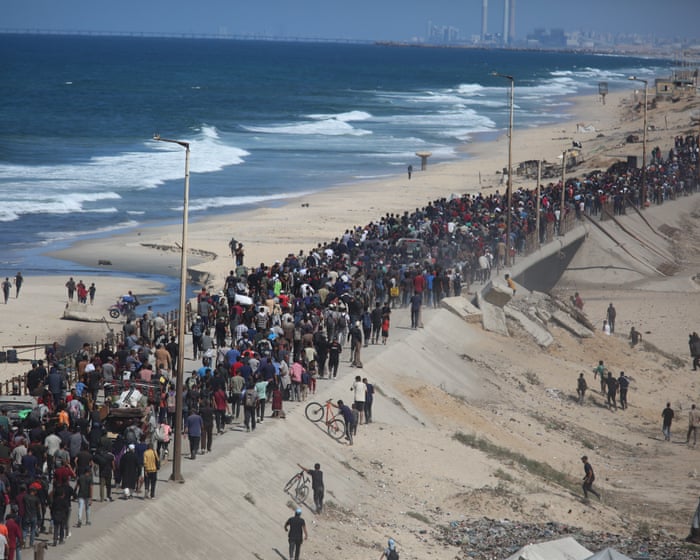A ceasefire has taken hold in Gaza, allowing thousands of displaced Palestinians to start returning home from the south. Israeli forces have pulled back to an agreed line, marking the first halt in fighting since March in the devastated territory.
The truce, approved by Israel’s cabinet on Thursday night, began at noon local time on Friday. It initiates the first phase of a U.S.-backed plan to end the war. Under the agreement, Hamas is to release 20 living Israeli hostages within 72 hours. In exchange, Israel will free 250 Palestinians serving long prison sentences, along with 1,700 others detained in Gaza during the conflict.
Prime Minister Benjamin Netanyahu credited the hostage release to Israel’s military and diplomatic efforts, emphasizing that the nation’s security guided his actions. He also thanked former U.S. President Donald Trump for supporting the deal.
Residents of Gaza were informed they could travel north via specific routes but were warned to avoid areas like Beit Hanoun and the Rafah crossing, where Israeli troops remain. Bombing had escalated on Friday morning just before the ceasefire started.
An Israeli government spokesperson stated that Israeli forces would still control 53% of Gaza initially, before the hostages are released. Troops were seen withdrawing from parts of Khan Younis and the Nuseirat camp, though they remain present elsewhere in the strip.
With the ceasefire announced, large numbers of Palestinians began moving north toward Gaza City. Nearly half a million people had been displaced from the north by Israeli military operations, and many are eager to return home. Crowds were seen on the coastal road, previously blocked to returnees.
One resident, Ismail Zayda, expressed relief that his house was still standing but described widespread destruction in his neighborhood.
This is the first pause in fighting in six months, giving residents a chance to check on their homes. The ceasefire also aims to boost humanitarian and medical aid into Gaza through all five crossings, with Israel permitting 600 aid trucks daily—similar to prewar levels. Aid is urgently needed, as malnutrition is widespread and famine conditions exist in some areas, according to food crisis experts.
Medical workers plan to use the truce to recover bodies from under rubble, with tens of thousands believed trapped in destroyed buildings.
A senior Hamas official, Khalil al-Hayya, said he received international assurances that the war has ended. However, many details of Trump’s 20-point plan to end the two-year conflict still need to be negotiated, including Hamas disarming and the future governance of Gaza.The proposal calls for Gaza to be governed by an international transitional authority and for Israel to fully withdraw to a buffer zone along the border.
Much of Gaza lies in ruins after two years of Israeli bombardment. Aid deliveries are expected to increase significantly, offering relief to a population suffering from famine and malnutrition.
Negotiators are likely to find the issues of Hamas’s weapons and the composition of the transitional authority more challenging than the exchange of hostages and detainees, as Israel and Hamas hold sharply opposing views on both matters.
Meanwhile, Israeli TV’s Channel 12 reported that Trump will visit Israel on Monday to address the Knesset in Jerusalem.
The ceasefire that began on Friday marks the first halt in fighting in over six months and brings the two sides closer than ever to a permanent end to the war in Gaza.
According to Gaza’s health ministry, Israel’s two-year military campaign has killed more than 67,000 Palestinians and injured nearly 170,000 others, with tens of thousands more believed buried under the rubble.
Israel launched the war in response to the Hamas-led attack on October 7, 2023, which killed approximately 1,200 people and took 251 hostages.
A UN commission of inquiry and several human rights organizations have accused Israel of committing genocide in Gaza over the past two years. Israel denies these allegations, stating that its actions were solely in self-defense.
Frequently Asked Questions
Of course Here is a list of FAQs about Palestinians returning to their homes in Gaza following a ceasefire designed with clear natural questions and direct answers
General Beginner Questions
1 Why are people returning to northern Gaza now
A ceasefire agreement has been declared creating a temporary pause in the fighting This period of relative calm allows people who fled to the south for safety to try and return to their homes and neighborhoods
2 Is it safe for them to go back
While the active fighting has stopped the situation is still very dangerous There is a risk of unexploded bombs damaged and unstable buildings and a severe lack of basic services like water food and healthcare The ceasefire is also temporary so the safety is not guaranteed longterm
3 What are they hoping to find when they get home
Many are hoping to find their homes still standing or at least salvage some of their belongings However many are returning to find their homes completely destroyed or severely damaged and uninhabitable
Practical Logistical Questions
4 How are people getting back to the north
People are traveling by any means they can This includes walking for miles riding in crowded trucks carts and cars often with all their remaining possessions
5 What are the biggest challenges they face upon returning
The main challenges are
No Shelter Their homes may be rubble
No Basic Supplies A critical shortage of food clean water and fuel
No Services Widespread destruction of hospitals bakeries and water systems
Health Hazards Risk of disease from destroyed infrastructure and unexploded ordnance
6 Where will they live if their house is destroyed
This is a major crisis Many will have to live with relatives in makeshift shelters or in the ruins of their own homes if any part is still standing There are very few undamaged buildings left
7 Is there any aid or help for them when they return
Humanitarian aid is extremely limited and struggling to reach people especially in the heavily damaged northern areas The distribution of aid is chaotic and not nearly enough to meet the enormous need
Advanced Contextual Questions
8 Why would someone return to such a dangerous and destroyed area
People return because its their home They have a deep connection to their




